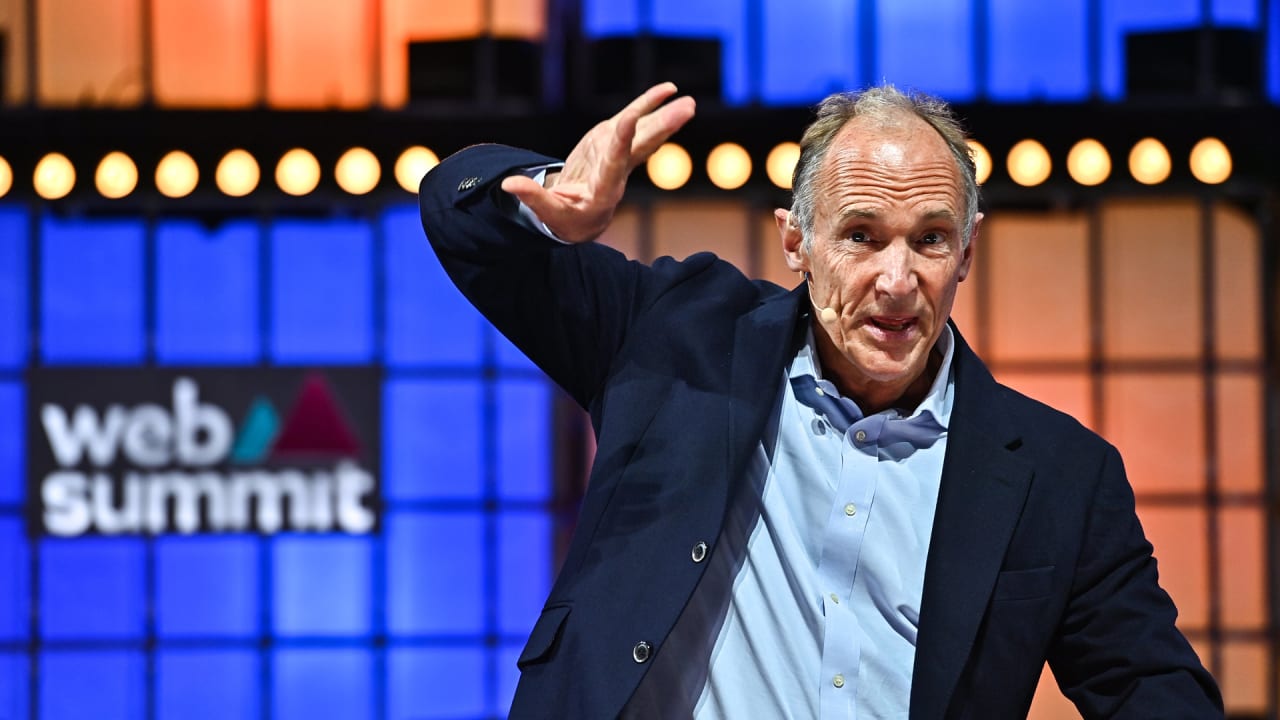[ad_1]

“Web3 is not the web at all.”
At Lisbon’s giant Web Summit conference last week, a guest speaker pithily rejected Web3—the buzzword encompassing an emerging set of technologies that aim to provide the internet with a decentralized, blockchain-based infrastructure for managing ownership of online data. Given that this Web3 critic was Sir Tim Berners-Lee, the guy who invented the World Wide Web more than 30 years ago, his take was newsworthy by definition.
But Berners-Lee didn’t take to the Web Summit stage simply to scoff at Web3. He was there to talk about Solid, his own open-source gambit to reinvent the web through new decentralized, privacy-minded tools for wrangling data. Originating as an MIT research project, Solid also led Berners-Lee to cofound a startup, Inrupt, to commercialize the technology. He is the company’s CTO; at Web Summit, he was joined onstage by his cofounder, John Bruce, its CEO. Afterward, my Fast Company colleague Rob Pegoraro and I met with both men to discuss Solid’s overarching vision, progress to date, and future goals.
A self-described “data nerd,” Berners-Lee has long taken pleasure in coming up with new ways to get more out of the information in his life. For example, before digital photos were routinely tagged with GPS data, he wrote his own software to place the snapshots he took on a ski trip on a map. As he hungered to do more useful things with his own data, “I thought, ‘I need even more power in this space, but also, I want everybody else to [have it],’” he says.
Eventually, this yen led to the Solid project. Its core idea: Instead of your personal data being scattered all over the web, kept by whoever collected it from you, it should all be stored in one place and under your control. That place is called a Pod, which is short for “personal online data store.” You can give any website access to information in a Pod—or, just as easily, revoke that access. Solid also offers a single sign-on feature, allowing you to log into any site that supports it, similar in concept to the universal log-in tools offered by Meta, Google, and Apple, without tying you to a tech giant’s ecosystem.
Berners-Lee compares a new Pod to an empty Scrabble board. “But as your life progresses—your digital identity or digital state—apps write stuff in, and it gets more and more interesting, more and more rich,” he explains. It also stays private, which he says makes it fundamentally different from Web3 and its use of public blockchain technology.
Because Solid can store data of any sort, its potential applications are as sprawling as the web itself. In Belgium, for example, the government of Flanders has committed to using Pods as the basis of the region’s entire digital economy. And in October, the BBC began using Pods to power its “watch party” feature. That lets viewers give the broadcaster access to additional data about themselves beyond what it knows from their streaming habits, allowing for more relevant content recommendations. As the BBC itself has pointed out, those suggestions could get even better if other streamers such as Netflix and Spotify were also to hook their algorithms up with Solid, allowing users to maintain records of their tastes that spanned multiple media platforms.
Onstage at Web Summit, Inrupt CEO Bruce said that the U.S.’s “biggest home improvement retailer” has adopted Pods to let users store everything from manuals to real-time energy usage data. He also mentioned an insurer that uses Pods to let customers share driving data in return for better rates. Offstage, he declined to specify which companies he was talking about. But he emphasizes that Inrupt is only now getting to the point where it’s ready to seriously sell the world on Solid, and that ever-increasing concerns about online privacy and the centralized power of big tech companies give the 60-person startup a huge opportunity.
“The winds of change are blowing in our favor,” he says. “And the reaction we’re getting thus far is hugely positive.”
As for Berners-Lee, he calls Solid “the third layer of the web,” following the original, static web pages of the 1990s and the more interactive, app-like experiences that have followed. “It’s a bit more tech, a bit more standards,” he says. “And a revolution in the way we actually use it.”
When I ask him if Solid’s adoption could mirror that of the World Wide Web in the 1990s—quiet progress for a few years, and then sudden ubiquity—he gently tells me that the web’s success wasn’t so sudden. It’s just that it began with one server that got ten hits a day, so it took a while for the numbers involved to get truly enormous. Even early on, “retrospectively, looking at it, there was absolutely, definitively, exponential growth,” he says.
Talking to Berners-Lee, it’s easy to get caught up in his enthusiasm for his latest brainchild—in part because of his unique credibility as the web’s creator, and in part because it just seems like a good idea. That doesn’t mean that the multitudes of companies currently sucking up our data for their own purposes will willingly adopt Solid. Indeed, they might do their best to ignore it. But if the technology gains traction with users, refusing to support it could become as unrealistic as choosing not to do business on the web at all.
Or at least Berners-Lee predicts so. “It will get to the point where people will actually just say, ‘Sorry, I’ve got that in my Pod.’” he says. “‘I’m not going to tell you any other way. Life’s too short.’”
[ad_2]
Source link

